Idiolecte
| Gallery
Camille Llobet
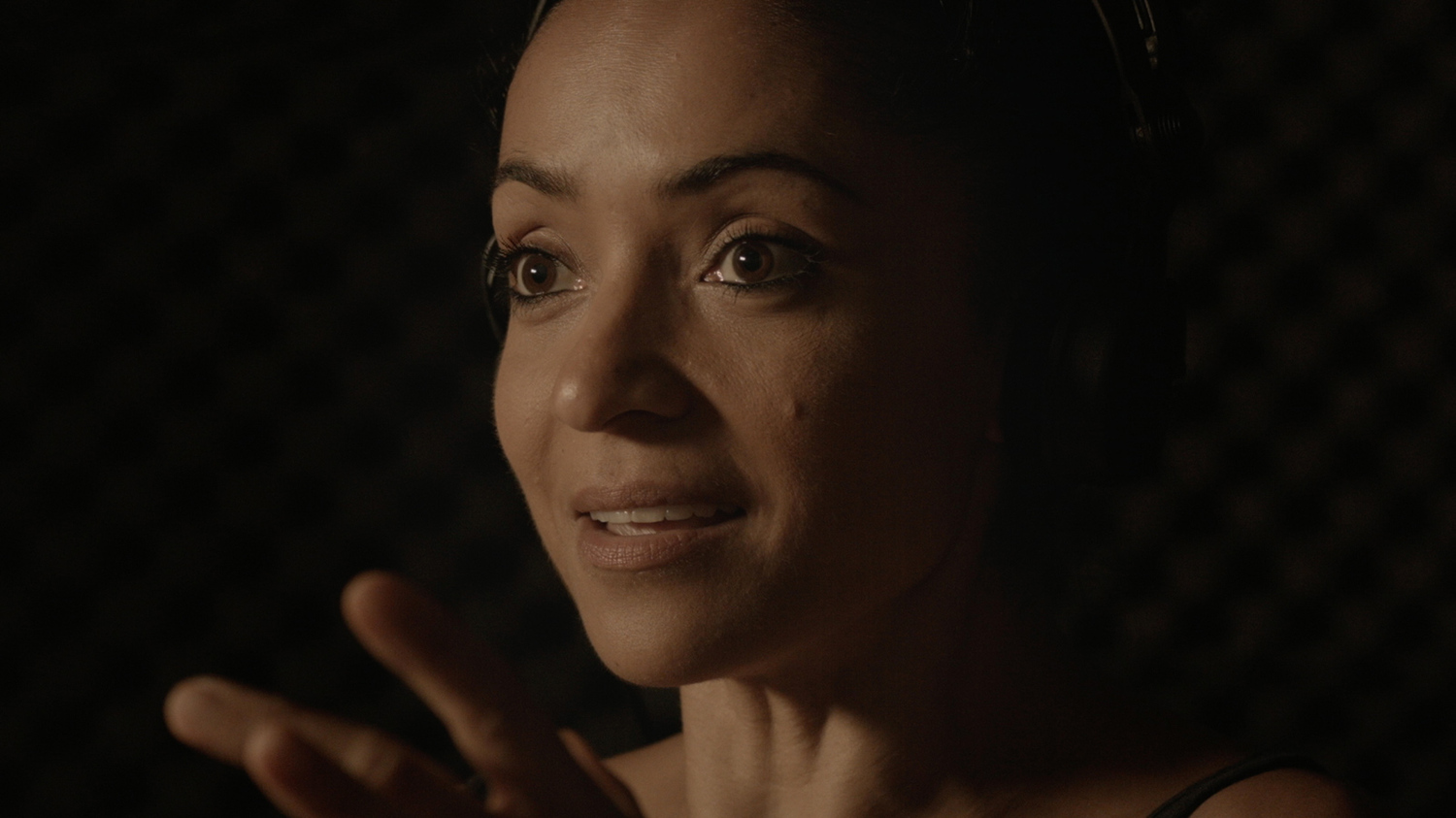
Idiolecte
Camille Llobet

Idiolecte
Camille Llobet
Exhibition view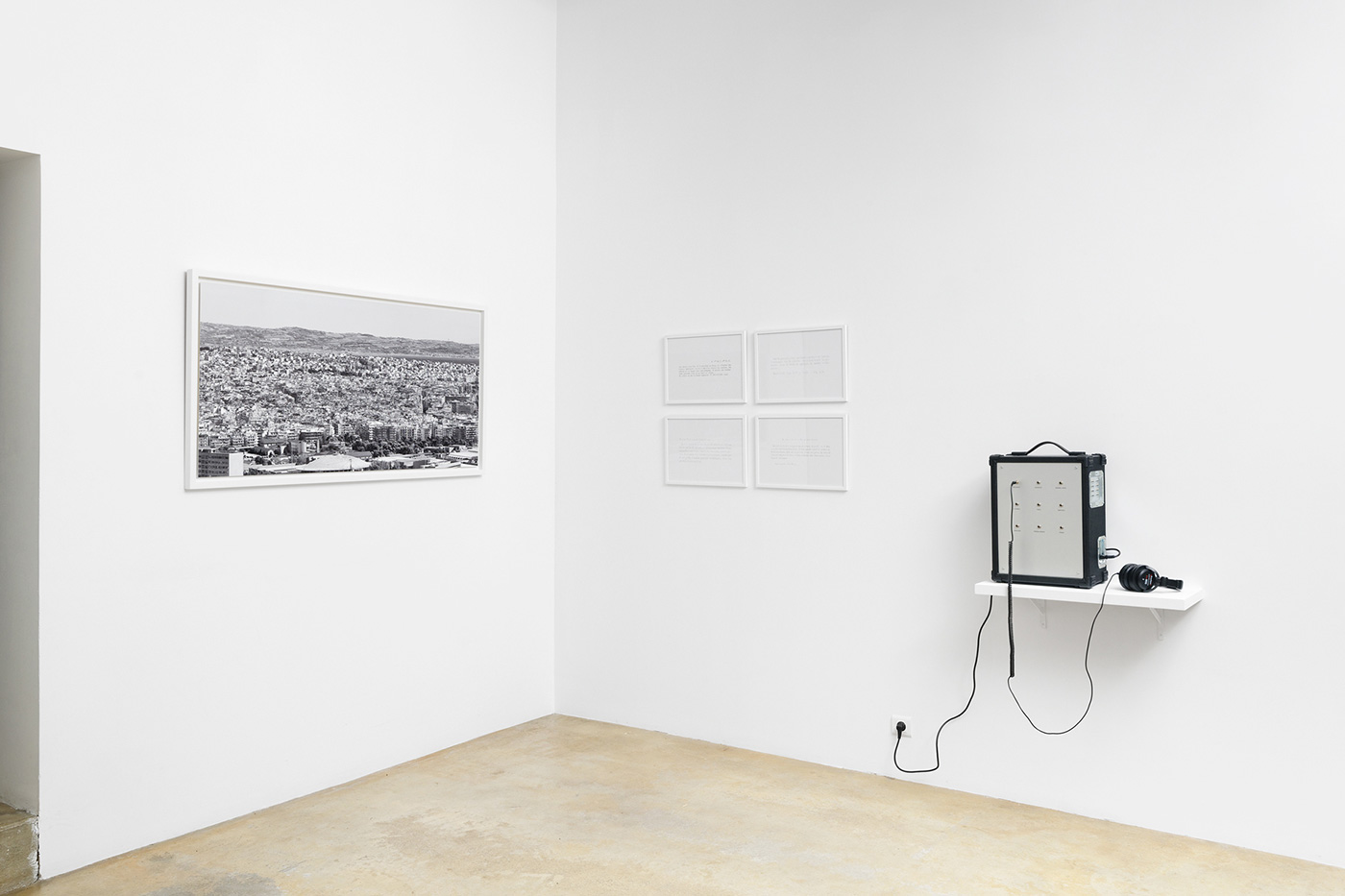
Idiolecte
Camille Llobet
Exhibition view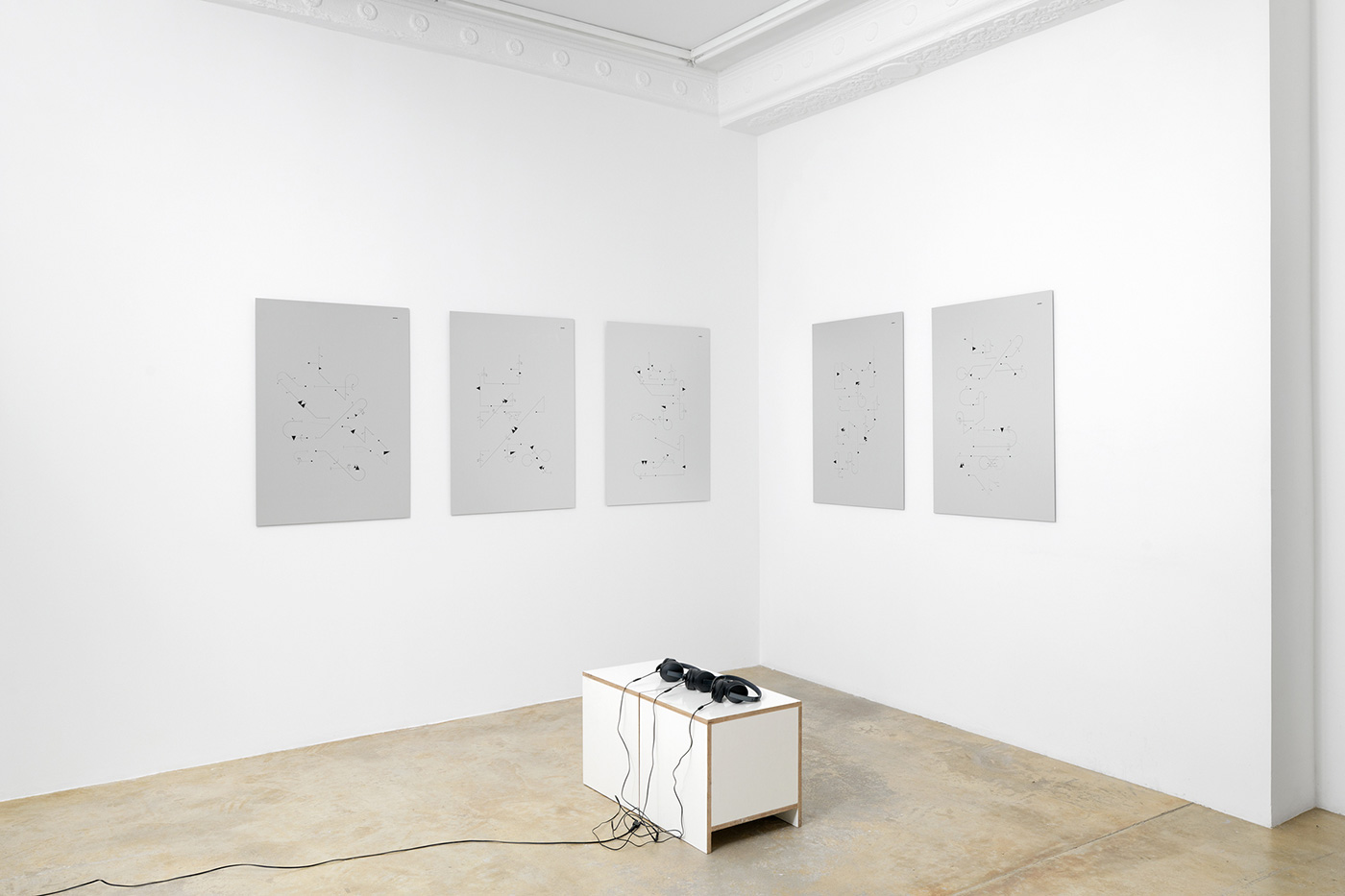
Idiolecte
Camille Llobet
Exhibition view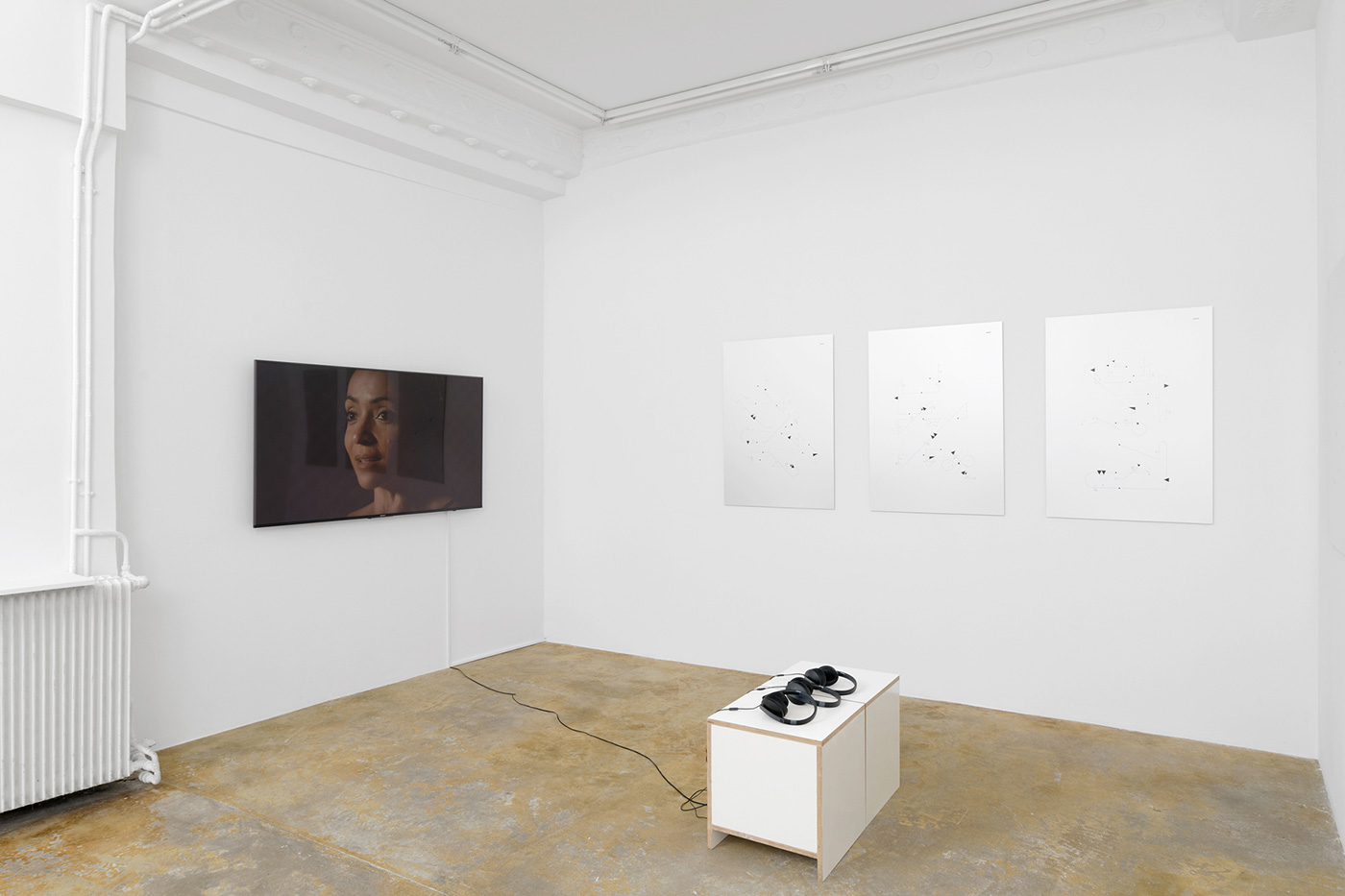
Idiolecte
Camille Llobet
Exhibition view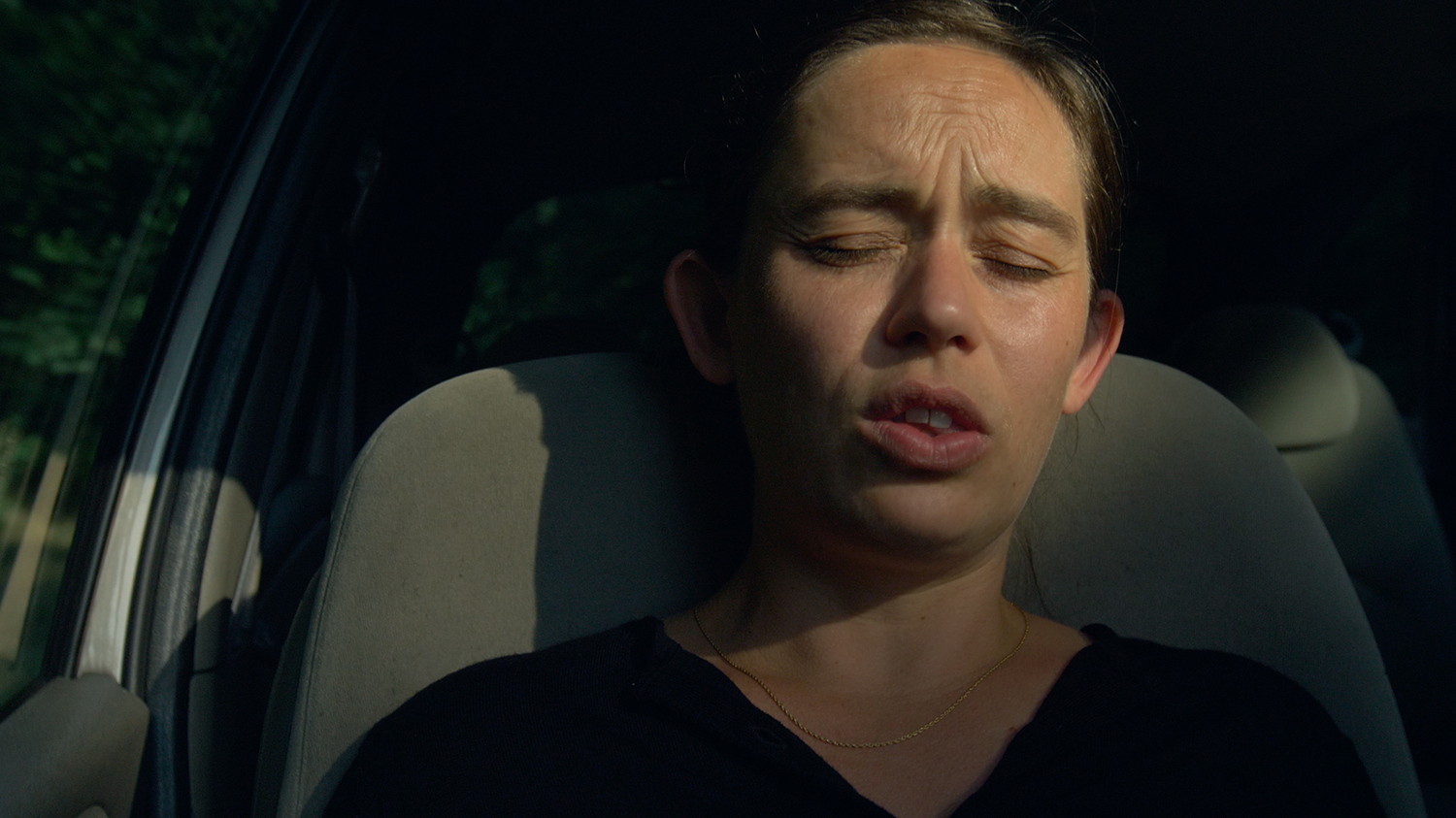
Vidéo 4K / 06'50
Edition of 5 ex + 2 EA
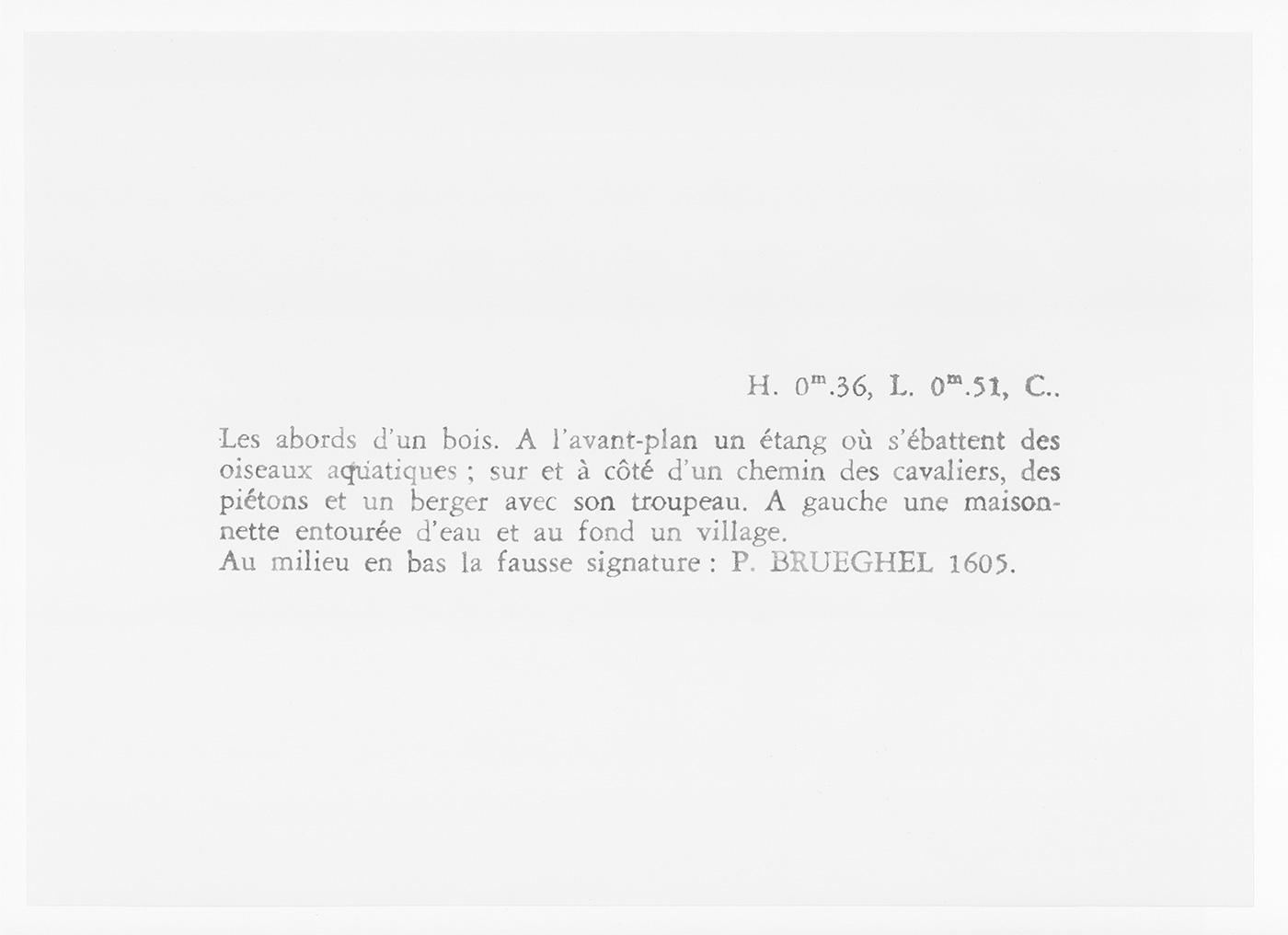
Graphite sur papier
Unique artwork
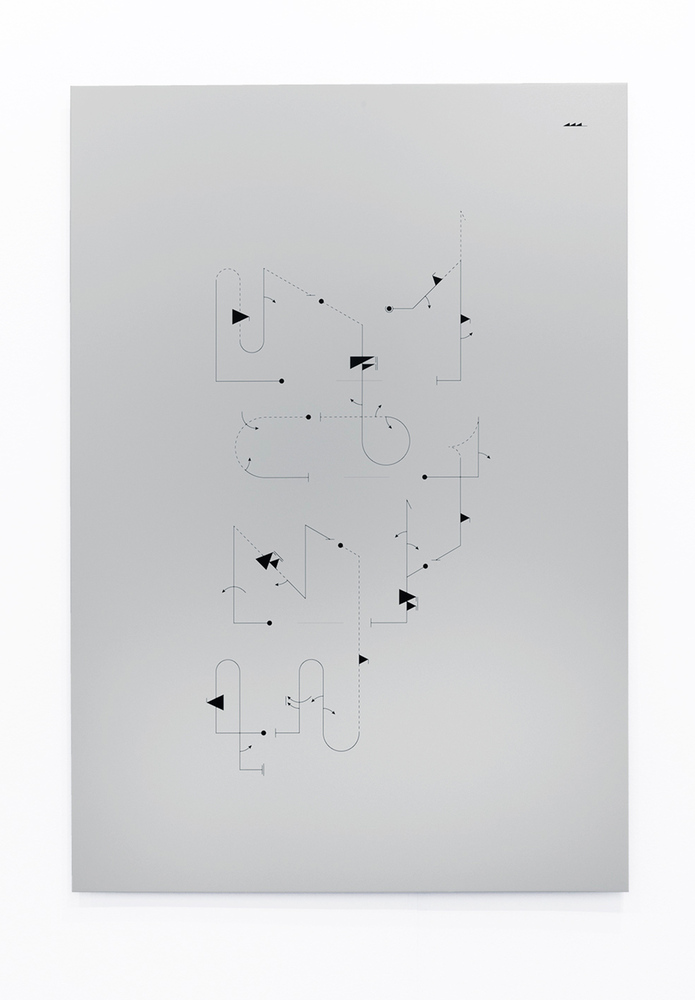
Sérigraphie sur aluminium anodisé
Edition of 1 ex + 1 EA
Photo : Maki Ochoa
avec le soutien aux galeries / première exposition du CNAP Centre national des arts plastiques
FR
En regard
Si, pour émettre le langage complexe et singulier qu’est le babil, le nourrisson reproduit les contours prosodiques de la langue de ceux qui l’entourent et le nourrissent, ces derniers, dans une forme de réciprocité sympathique, parlent et produisent, en retour, des sons similaires, redoublant de la sorte le jeu d’imitation et de répétition au fil duquel se tisse cette relation pré-linguistique, affective et affectée, entre deux êtres qui s’appellent et se répondent mutuellement, apprenant ainsi à se (re)connaître et, idéalement, à s’entendre.
« Les langues de l’adulte retiennent-elles quelque chose du babil infiniment varié dont elles naquirent un jour ?, s’interroge Daniel Heller-Roazen (1). Serait-ce le cas, il ne s’agirait que d’un écho, puisque, là où il y a langage, le babil du nourrisson a disparu depuis longtemps, du moins sous la forme qu’il avait prise un temps dans la bouche de l’enfant ne parlant pas encore. Ce ne serait que l’écho d’une autre langue, qui n’en est pas une : une écholalie, vestige de ce babil indistinct et immémorial dont l’effacement a permis la parole. »
Évanoui au profit de la parole, le babil a laissé des traces, de sorte que nous rejouons, sans même en avoir conscience, une part de ce langage préliminaire, enfoui en nos propres limbes.
Dans sa vidéo Majelich (2018), Camille Llobet donne en quelque sorte à voir et à entendre la mise en abîme (elliptique) de ce dispositif « primaire » d’écho et d’écoute, et, comme par un renversement de situation anachronique, fait babiller l’adulte. La soprano Magali Léger y reproduit des morceaux choisis d’enregistrements de « séances » de babil de la fille de l’artiste écoutés en boucle, au casque, de sorte que nous ne pouvons les percevoir, si ce n’est par l’intermédiaire de la voix de la cantatrice qui met ici de côté ses talents d’interprète lyrique pour œuvrer davantage à une forme de performance ventriloque. En diffusant, dans cette chambre noire anéchoïque qu’est le studio de répétition, ce langage enfantin dont elle a perdu depuis longtemps l’usage et la mémoire, Magali Léger fait-elle aussi résonner l’enfant en elle (2) ?
Sans en avoir préalablement connaissance, il est difficile d’identifier, d’après ceux qui « sortent », l’origine des sons (inaudibles donc) qui « entrent » via le casque et opèrent à répétition en tant que stimuli au pouvoir hypnotique. Aussi le babil se fait-il — à nouveau — oublier. Langues inconnues venues d’on ne sait où, boucles étranges, obscures borborygmes, litanies envoûtantes… : autant de paroles échappant à l’entendement que l’on imaginerait pouvoir être proférées à l’occasion de quelque rituel de transe ou de possession mystique, à l’instar du « parler en langues » (ou glossolalie). Des mots — ou plutôt des sons produits par la voix humaine — qui s’accompagnent ici d’expressions, de clignements d’yeux, de gestes, de respirations, de soupirs etc. témoignant d’un état, quasi second, de concentration et d’effort intenses.
Si l’exercice consiste en quelque sorte à dire ce qui est entendu, Camille Llobet a, à différentes reprises, conçu et filmé des expériences consistant à dire ce qui est vu selon un régime cette fois descriptif et en cela, déjà narratif. Que fait l’expérience perceptive au langage (et inversement) ? C’est sans doute l’une des questions que s’est posée l’artiste en se livrant elle-même — une fois n’est pas coutume — à une performance sensationnelle faisant l’objet de la vidéo Revers (2018). Assise les yeux fermés sur le siège passager d’une voiture sillonnant une route bordée d’arbres par une journée ensoleillée, elle tâche de décrire les « impressions fugitives » (3) qui tapent, à travers les paupières, sa rétine excitée par les visions que procure cette dreamachine ambulante (4).
« (…) des masses noires boursouflées sur le bas poussent projettent des égratignures blanches aspirées dans le rouge qui s’gonflent virent au jaune sur le haut jaune immaculé (…) »
Le rythme haletant et syncopé, parfois bégayant, de cette parole jaillissante improvisée (5) qui, « excédée » par la vitesse et la profusion des apparitions, marque çà et là une halte, témoigne de l’impossibilité de saisir et de décrire toutes les sensations colorées générées de manière aléatoire et irrégulière par l’association du déplacement du véhicule et de la lumière qui s’y engouffre. Bien que tout à fait singulière et distincte du cut-up (6), cette transe poétique aux accents psychédéliques n’est pas sans rappeler cette technique littéraire qui, à l’origine, tente de reproduire par la poésie (sonore) les visions et autres états modifiés de conscience sous l’influence de substances psychoactives et hallucinogènes. Le spectateur de Revers est témoin d’une expérience de cinéma élargi dont il ne perçoit que les signes extérieurs, et dont il peut, sur la base des descriptions de l’artiste, se projeter intérieurement les images, dignes d’un film expérimental des années 60 ponctué d’effets flicker et de couleurs fusant dans tous les sens, rétine et cerveau faisant respectivement office d’écran de cinéma (photo)sensible.
Pendant des semaines, l’artiste a revécu cette expérience par bribes dès qu’elle fermait les yeux, comme un phénomène réflexe de persistance qui, de rétinienne, s’est étendue sur le plan cérébral. Preuve parmi tant d’autres de l’étonnante plasticité de notre cerveau dont se servent notamment les sportifs pour répéter mentalement le parcours de leur « course » en vue d’une compétition. Dans Faire la musique (2017), on voit ainsi se succéder hommes et femmes, chacun se livrant, à sa manière, à une danse inconnue (et incongrue) faisant de leurs mains les pieds, transporté tout à fait hors du lieu et du temps où il se trouve réellement et dont il s’agit de faire abstraction.
Piliers de l’exposition « Idiolecte », les trois expériences filmées évoquées, traversés par le motif pluriel de la répétition, véritable moelle épinière du travail de Camille Llobet, révèlent des états de concentration inouïs alliant une tension et une vibration qui circulent dans l’esprit comme à travers tout le corps. Un trouble dont le caractère communicatif tendrait à nous faire réfléchir sur la manière dont ces œuvres pourraient activer, chez nous autres regardeurs, le principe des « neurones miroir » (7) selon lequel le fait d’observer ou d’imaginer une action activerait les mêmes zones du cerveau que de réaliser cette même action.
Qu’il s’agisse de vidéos, de photographies, de dessins ou d’objets, Camille Llobet nous met face à des images fortes et relativement « brutes », singulièrement et sensiblement performatives, qui expriment l’étendue des modes de communication et de transmission en même temps qu’elles explorent, en opérant des passages d’un médium à un autre, les manières dont images et langages s’informent (et se déforment) mutuellement, jusqu’à épouser les limites du lisible et du dicible. Re-présenté par des voies.x autres, le réel, comme absent, s’abstrait et acquiert une étrangeté vers laquelle nous sommes irrépressiblement appelés.
Anne-Lou Vicente, décembre 2018
Notes :
(1) Daniel Heller-Roazen est professeur de littéraire comparée à l’université de Princeton. Voir Écholalies. Essai sur l’oubli des langues, Paris, Seuil, 2007, p. 14.
(2) Si elle reproduit le babil de l’enfant, Magali Léger, à un moment de la vidéo, reproduit les contours prosodiques de sa propre parole enregistrée lors d’un entretien et diffusée au casque, se livrant ainsi plus directement à un exercice de babillage.
(3) Voir Clément Rosset, Impressions fugitives. L’ombre, le reflet, l’écho, Paris, Les Éditions de Minuit, 2004.
(4) La performance contient les ingrédients clé d’une expérience vécue par Brion Gysin en 1958 qui lui a inspiré la conception de la Dreamachine : « J'ai eu un déchaînement transcendantal de visions colorées aujourd'hui, dans le bus, en allant à Marseille. Nous roulions sur une longue avenue bordée d'arbres et je fermais les yeux dans le soleil couchant quand un flot irrésistible de dessins de couleurs surnaturelles d'une intense luminosité explosa derrière mes paupières, un kaléidoscope multidimensionnel tourbillonnant à travers l'espace. Je fus balayé hors du temps. Je me trouvais dans un monde infini... La vision cessa brusquement quand nous quittâmes les arbres. »
(5) Si l’expérience n’est pas écrite à l’avance, l’artiste s’y est préparée en faisant notamment des recherches sémantiques relatives à des impressions, des images, des souvenirs.
(6) Également mise au point par Brion Gysin et rapidement adoptée par son acolyte de la Beat Generation, l’écrivain William Burroughs, la technique consiste à fragmenter un texte pour en produire un nouveau.
(7) « [Les neurones miroirs] sont les promoteurs du langage, ils expliquent pourquoi nous parlons avec nos mains. Ils rendent compte de l'expression des émotions ; ils sont le mécanisme de notre compréhension d'autrui », in Les neurones miroirs, de Giacomo Rizzolatti et Corrado Sinigaglia, Paris, Éditions Odile Jacob, 2007.
EN
Facing
If, to emit the complex and singular language that is babble, the baby reproduces the prosodic contours of the language of those who surround and feed him, the latter, in a form of sympa-thetic reciprocity, speak and produce, in return, similar sounds, intensifying in a certain way this imitation and repetition game through which this pre-linguistic, affective and affected relationship is woven, between two human beings who mutually call out to and answer each other, subsequently learning to know (and recognize) each other and ideally, to understand each other.
“Do the languages of the adult retain something of the infinitely varied babble from which they were born one day?” Daniel Heller-Roazen wonders(1). “Were this the case, it would only be a question of an echo, since, where there is language, the baby’s babble has long disappeared, at least in the form that it had taken for a time in the mouth of the child who was not talking yet. It would only be the echo of another language, that isn’t one: an echolalia, a vestige of this in-distinct and age-old babble whose disappearance made speech possible.”
Fading to give way to speech, babble has left traces, in that we replay, without even being aware of it, a part of this preliminary language, buried in our own limbo.
In her video Majelich (2018), Camille Llobet in a certain way has the spectator see and hear the (elliptical) mise en abyme of this “primary” echo and listening system and, as though through an anachronistic reversal of the situation, has the adult babble. In it, the soprano Magali Léger reproduces chosen pieces of recordings babble “sessions” of the artist’s daughter listened to in a loop, with headphones, in such a way that we can’t perceive them, if only through the intermediary of the soprano’s voice who sets aside here all her talent as an opera singer to work more on a form of ventriloquial performance. By diffusing, in this anechoic dark room that is the rehearsal studio, this infantile language whose use and memory she has long lost, does Magali Léger also make the child in her resonate(2)?
Without knowing what it is ahead of time, it is difficult to identify, according to those who “leave,” the origin of the (therefore inaudible) sounds that “enter” through the headphones and repeatedly function as stimuli with a hypnotic power. So babble makes itself —once again— be forgotten. Unknown languages that come from an unknown place where, strange loops, obscure rumblings, spellbinding litanies…: so much speech eluding understanding that we could imagine being able to be offered on the occasion of some trance or mystical possession ritual, following the example of “speaking in tongues” (or glossolalia). Words —or rather sounds produced by the human voice— that are accompanied here by facial expressions, blinking of eyes, gestures, breaths, sighs, etc. show an almost second state of concentration and intense effort.
If the exercise consists in a certain fashion of saying what is heard, Camille Llobet has, on dif-ferent occasions, designed and filmed experiences consisting in saying what is seen according to this system that is both descriptive and in that, already narrative. What does the perceptive experience do to language (and vice versa)? This is undoubtedly one of the questions that the artist asked in giving herself over —just this once— to a sensational performance that is the subject of the video Revers (2018). Seated with her eyes closed on the passenger seat of a car driving along a tree-lined road on a sunny day, she attempts to describe the “fleeting impressions”(3) that strike, through her closed eyelids, her retina stimulated by the visions that this ambulatory dreamachine provides(4).
“[…] black puffed-up masses on the bottom push project white scratches sucked up into the red that swell turn yellow on the immaculate yellow top […]”
The panting and syncopated, sometimes stuttering rhythm of this improvised gushing speech(5) that “overcome” by the speed and profusion of the apparitions, pauses here and there, bears witness to the impossibility of capturing and describing all the colored sensations randomly and irregularly generated by the combination of the movement of the vehicle and the light that pours into it. Although completely singular and distinct from the cut-up(6), this poetic trance with psychedelic accents in some ways brings to mind that literary technique which initially at-tempted to reproduce through (sound) poetry the modified visions and other states of awareness under the influence of psychoactive and hallucinogenic substances. The viewer of Revers is the witness of a expanded cinema experience of which he only perceives the external signs and in which he can, on the basis of the artist’s descriptions, project himself inside the images, worthy of an experimental 1960s film strewn with flicker effects and colors merging in every direction, the retina and brain acting respectively as a (photo)sensitive movie screen.
For weeks, the artist relived this experience in bits and pieces when she closed her eyes, as a persistence reflex phenomenon that, from the retina, spread to the brain. One proof among so many others of the amazing plasticity of our brain that athletes notably use to mentally repeat the itinerary of their “race” with a view to a competition. In Faire la musique (2017), we thus see men and women in succession giving themselves over, each in his or her own way, to an un-known (and incongruous) dance turning their hands into feet, totally transported out of the place and time in which they really find themselves and which they ignore.
Pillars of the “Idiolecte” exhibition, the three filmed experiences evoked, all featuring the plural motif of repletion, a genuine backbone of Camille Llobet’s work, reveal unusual states of concentration combining a tension and a vibration that circulate in the mind in the same way as through the body. A disturbance whose communicative nature might tend to make us reflect on the way that these works could activate, in we others who look at them, the “mirror neurons” principle(7) according to which the fact of observing or imagining an action could activate the same areas of the brain as undertaking this same action.
Whether it is a question of videos, photographs, drawings or objects, Camille Llobet puts before us singularly and relatively performative, strong and more or less “raw” images, that express the expanse of communication and transmission modes at the same time as they explore, by passing from one medium to the other, the ways in which images and languages mutually inform (and deform) each other, to the point of wedding the limits of the readable and the expressible. Re-presented by other ways/voices, the real, as though absent, is cut off and acquires a strangeness toward which we are irrepressibly called.
Anne-Lou Vicente, December 2018
Notes:
(1) Daniel Heller-Roazen is professor of comparative literature at Princeton University. See Écholalies. Essai sur l’oubli des langues, Paris, Seuil, 2007, p. 14.
(2) If she reproduces the infant’s babble, Magali Léger, at a point in the film, reproduces the prosodic contours of her own speech recorded during an interview and diffused in the headphones, consequently giving herself over more directly to a babbling exercise.
(3) See Clément Rosset, Impressions fugitives. L’ombre, le reflet, l’écho, Paris, Les Éditions de Minuit, 2004.
(4) The performance contains the key ingredients of an experience undergone by Brion Gysin in 1958. It inspired his creation of the Dreamachine: “Had a transcendental storm of color visions today, in the bus, going to Marseille. We ran through a long avenue of trees and I close my eyes against the setting sun. An overwhelming flood of intensely bright colors exploded behind my eyelids: a multidimensional kaleidoscope whirling through space. I was swept out of time. I was out in a world of infinite color. The vision stopped abruptly as we left the trees.”
(5) If the experience isn’t written in advance, the artist prepared for it by notably doing semantic re-search concerning impressions, images, memories.
(6) Also developed by Brion Gysin and quickly adopted by his Beat Generation acolyte, the writer William Burroughs, the technique consists in fragmenting a text to produce a new one.
(7) “[The mirror neurons] are promoters of language, they explain why we talk with our hands. They give an account of the expression of the emotions; they are the mechanism of our comprehension of the other,” in Les neurones miroirs, by Giacomo Rizzolatti and Corrado Sinigaglia, Paris, Éditions Odile Jacob, 2007.